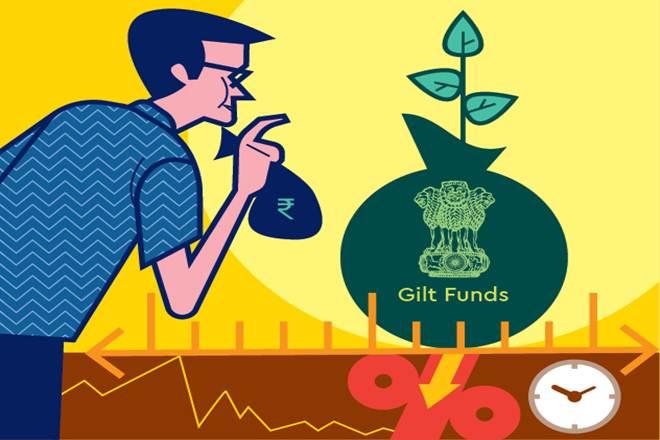Low-risk mutual funds investment: Long-term gilt funds a good choice now

At a time when many categories of debt mutual funds are reporting redemptions, investors are buying gilt funds as they are safer because there is no credit risk. In April, gilt funds saw net inflows of Rs 2,515 crore as compared with net outflows in funds such as Rs 19,239 crore from credit risk funds, Rs 6,841 crore from low duration funds and Rs 6,364 crore from medium duration funds.
Gilt funds of mutual funds invest in government securities issued by Reserve Bank of India. The maturities of government securities vary as the government issues paper of various tenures. For individuals, investing through mutual funds in gilt funds is a better option as investing in the funds directly will require large amount of money. Gilt funds suit risk-averse investors who look at safety of their investments rather than high returns and offers better asset quality. These funds give moderate returns and ensure capital preservation as compared to equity funds.
Falling interest rates
Gilt funds are attractive to buy in a falling interest rate regime as bond prices are inversely proportional to the interest rates. When interest rates fall, bond prices go up. On May 22, Reserve Bank of India (RBI) had cut the policy repo rate by 40 basis points (100 bps equal a percentage point). In fact, this is the eighth successive rate cut, with the repo rate falling 2.5 percentage points from 6.5% in August 2018 to 4% currently. So, whenever yields fall, bond price rises and the rise in bond prices move up the net asset value (NAV) of debt funds. Any drop in yield will result in capital gains for investors. While there is no risk of non-payment of principal or interest amount in gilt funds, there is interest rate risk.
Brijesh Damodaran, managing partner, BellWether Advisors LLP, says investment is gilt funds are recommended in a falling interest rate regime. “They have given returns in double digit in the past one and two years. As gilt funds can see extreme volatility, especially in the very short term, investors should park money in these funds for a longer period of five years or more,” he says and cautions that there could be a pause in interest rate cut now.
However, RBI’s Monetary Policy Statement of May 22 underlines that Monetary Policy Committee has decided to continue with the accommodative stance as long as it is necessary to revive growth and mitigate the impact of Covid-19 on the economy, while ensuring that inflation remains within the target.
Timing is important
Timing is very important while investing in gilt funds. One must invest when the rates are falling and redeem before interest rates start moving up. In a rising interest rate regime, returns from gilt funds fall. So, investors will have to bear the interest rate risks when investing in gilt funds. As gilts fund can be very volatile in the short-term, investors must stay invested for long duration to benefit from a cycle of rising and falling interest rates.
Gilt funds are taxed like debt mutual funds. Short-term capital gains are taxed as per the investor’s income tax slab if the units are redeemed before three years. Long-term capital gains beyond three years are taxed at 20% with indexation.
Investors should invest in government securities for long-term, ideally for five to 10 years, as the volatility evens out in the long term. In the current Covid-19 scenario, as the equity markets remain volatile and debt funds, too, have become riskier after Franklin Templeton closed six of its credit risk fixed income schemes because of the redemption pressure and illiquidity, gilt funds are ideal to invest in.
source: financialexpress




